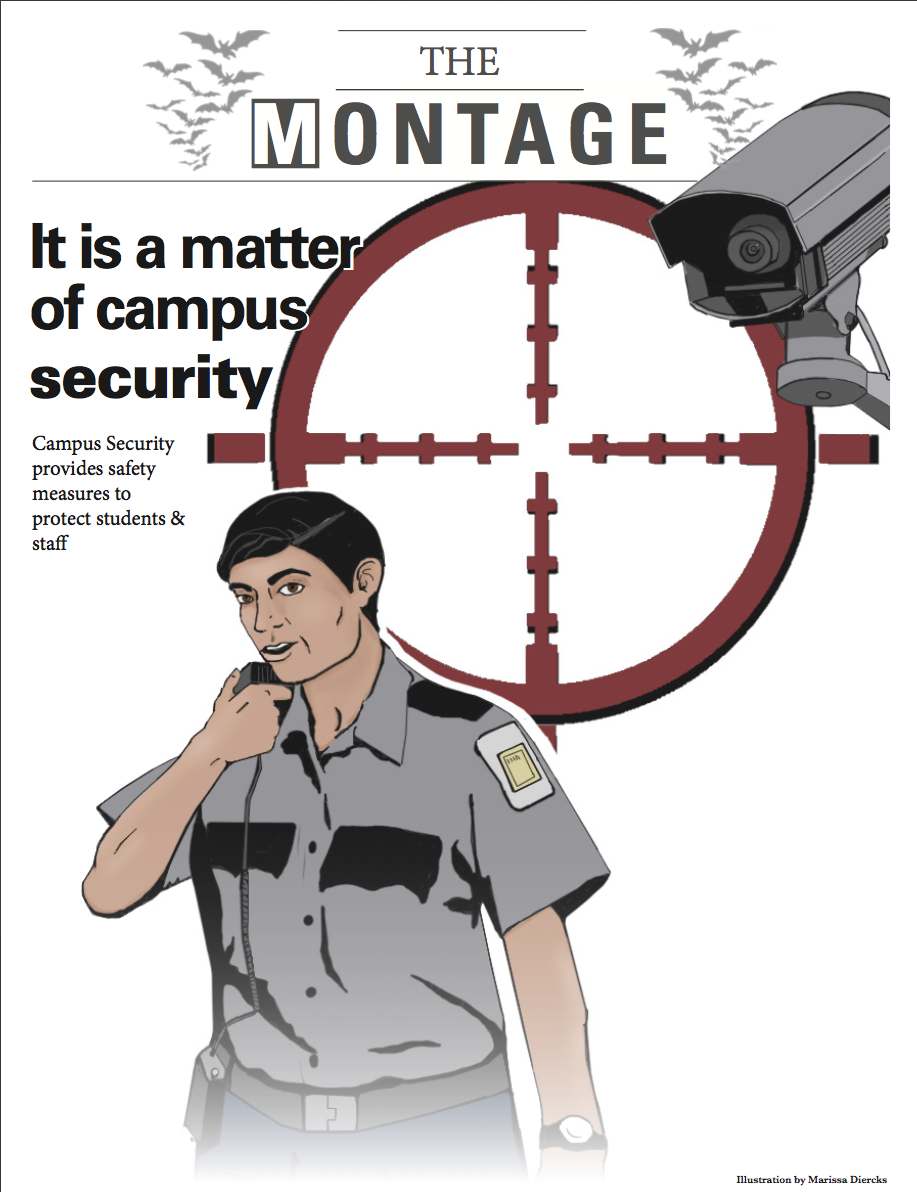Campus security provides safety measures to protect students & staff
By: KATELYN ERICSON
Staff Writer
The United States has once more experienced a school shooting. CNN ranked the Umpqua shooting among the “28 deadliest mass shootings” in the United States.
According to ABC News, there have been 47 school shootings this year. What safety procedures and practices does STLCC- Meramec have to prevent a similar event from occurring? While it is impossible to prevent or predict a tragedy like Umpqua, we put systems in place to minimize the risk, Vice President of Student Affairs Kim Fitzgerald said.
“You do everything you can do to insure the safety of faculty, students and staff,” Fitzgerald said.
In response to school shootings like Umpqua, STLCC campus police are training in case the worse should happen.
“We have increased active shooter training and lockdowns. Every campus police officer has had these trainings once, most twice, in
the last two years,”Chief of Campus Police Anthony Russo said. Campus police have firearms and emergency equipment that they train with. “Our officers are highly trained,” Director of Public Safety and Emergency Management Mark Potratz said. “Our officers daily wear and use a wide- range of safety equipment.
They regularly practice their skills.” This application of skills is very important, Potratz said.
Campus police conduct two kinds of drills that prepare staff, faculty and students for an armed intruder.
The active shooter drill is technical and tactical training for police, Russo said. Lockdown is technical and tactical training for students. Lockdown drills are very simple — lock the door, turn the lights off, stay out of sight.
Drills are good practice for students, faculty and staff because they force people to mentally prepare for emergencies, Fitzgerald said.
The success of campus security and safety is not the sole responsibility of the campus police, according to Russo. Building Evacuation Leaders are in every building on every floor. These people are part of Meramec’s Emergency Response Team (EMT). They are responsible to help people leave or take shelter in the building.
“Police are only as effective as the staff and faculty,” Potratz said.
Meramec’s police force has had a very high level of cooperation from faculty and staff, Potratz said. The Building Evacuation Leaders are a very valuable part of EMT.
Twice a year, during spring and fall semesters, faculty and staff have an emergency management drill conducted by a fully comprehensible emergency operations plan, Russo said.
“It is imperative to get faculty and staff and police to drill for all hazards and emergencies,” Russo said. “We regularly update the emergency plan for everyone. It is a plan to help us keep students safe.”
The campus police offer safety seminars, safety tips, the emergency text alerts and informational material to help students prepare for various kinds of emergencies.
The safety forums are for anyone, including members of the public.
“The key to safety is to learn how to respond to all kinds of hazards — man-made and natural,” Potratz said.
During student orientation, students learn about some of the safety procedures and the ‘see-something-say-something’ campaign, Manager of Campus Life Carolyn O’Laughlin said. However, the emphasis of student orientation is not emergency drills.
“Our goal is to help prepare students to succeed at Meramec and to inform them that we do have structures to keep everyone safe,” O’Laughlin said. “I want people to understand that they are a part of the community. We are all responsible for the safety of our community.”
Some Meramec students are familiar with the three minute and 45 second safety video shown before class during the first week of the new semester. However, some students have not seen these videos which prepare them to handle emergencies at Meramec.
Amanda Herring, an STLCC student for three semesters, transferred from the Wildwood campus to Meramec in spring 2015. According to Herring, she saw the video perhaps twice at Wildwood.
“I don’t remember seeing the video at Meramec,” Herring said. “All the teachers skipped over the video. One instructor asked if any students had not seen it but then didn’t wait for students to raise their hands. If there was a fire, I’d have no idea where to go.”
According to Potratz, faculty operate on academic freedom which means that it is the instructor’s choice of whether or not to show the video as part of their course material.
“To show the video would be to the advantage of everyone,” Potratz said.
We rely heavily on faculty and staff cooperation to inform students of the safety procedures from the video, Fitzgerald said.
“I wish they had gone over fire and tornado drills,” Herring said. “I don’t know the procedure. I’d want to know where to go to.”
To show the video in class should be mandatory, Russo said.
“If it means the safety of another individual, yes. I would love to see that video mandatory,” Russo said.
While showing the video is not a requirement, the Department of Public Safety recommends that instructors show their students the video during the first week of class as part of student orientation, Russo said.
The video is not on STLCC’s YouTube channel. Students new to Meramec who are concerned about safety procedures can contact the Campus Police, the Student Government Association (SGA) and Campus Life.











